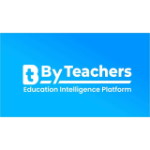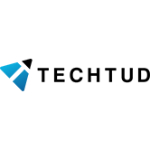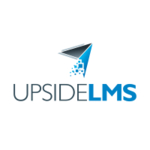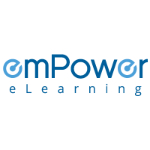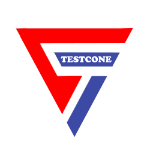TechnologyCounter provides genuine, unbiased real user reviews to help buyers make informed decisions. We may earn a referral fee when you purchase through our links, at no extra cost to you.
List of 15 Best E Learning Software
Showing 1 - 15 of 85 productsSimpliv is a leading online platform that offers a wide range of courses for individuals looking to upskill and enhance their knowledge. With a user-friendly interface and a diverse library of courses, Simpliv is dedicated to providing accessible and...Read Simpliv Reviews
Yo!Coach is a ready-made and customizable solution that can help you launch a feature-rich eLearning & consultation website. It is an ideal solution that can serve various business verticals like, online tutoring, language learning, etc...Read Yo!Coach Reviews
Teachers have a demanding and ever-evolving job, requiring them to constantly adapt to new technologies and curriculum. Thats where By Teachers comes in. Our software is designed to assist and enhance the teaching experience, providing a user-friendl...Read By Teachers Reviews
Samba Live, the innovative virtual communication software designed to enhance collaboration and engagement for teams and businesses. With seamless audio and video conferencing, real-time document sharing and interactive features, Samba Live makes rem...Read Samba Live Reviews
CleverGround the innovative software solution designed to simplify and streamline your daily tasks. With its user-friendly interface features, CleverGround helps you stay organized, productive, and on top of your game. Say goodbye to mundane tasks an...Read CleverGround Reviews
Edredo is a software designed to streamline and enhance your digital experience. As a leading expert in the field of technology, Edredo offers a user-friendly platform that simplifies complex digital tasks, making your life easier and more efficient...Read Edredo Reviews
Mindflash is a training platform designed to meet the evolving needs of businesses and organizations. Whether its compliance training, onboarding, or professional development, Mindflash offers a user-friendly is a solution for creating, delivering, a...Read Mindflash Reviews
Invince is a software designed to streamline your business operations and revolutionize your productivity. With its innovative features and user-friendly interface, Invince offers an efficient solution for all your organizational needs. Get ready to...Read Invince Reviews
Agora.io is a dynamic and innovative platform that enables seamless communication and collaboration through real-time engagement tools. This advanced network empowers businesses and organizations of all sizes to connect and interact with their audien...Read Agora.io Reviews
ZOOM is a tool for seamless video conferencing, allowing you to connect with your team, friends, and family no matter where you are. With its intuitive interface features, ZOOM provides the perfect solution for efficient remote communication. Say goo...Read ZOOM Reviews
emPower eLearning is a leading platform that offers innovative and dynamic solutions for online learning. With a team of experts and cutting-edge technology, emPower helps individuals and organizations unlock their full potential through engaging and...Read emPower eLearning Reviews
WizIQ LMS is a and user-friendly learning management system designed to help educators and organizations create, manage, and deliver online courses. With its advanced features interface, WizIQ LMS revolutionizes the way distance learning is conducted...Read WizIQ LMS Reviews
TestCone is a software that takes efficiency and effectiveness to a whole new level. Simplifying the testing process with its user-friendly interface, TestCone is designed to optimize your workflow and save you time and resources. Perfect for busines...Read TestCone Reviews
LTGplc is a software solution for your business needs. With its advanced features and user-friendly interface, LTGplc streamlines your operations and enhances productivity. Dont get left behind in the competitive market, stay ahead with LTGplc. See t...Read LTGplc Reviews
Testinvite is a versatile is a software designed to streamline the entire test creation and management process. With its user-friendly interface features, it allows users to easily create and administer tests, track results, and provide valuable insi...Read Testinvite Reviews
- What Is E Learning Software?
- Top Reasons Why Businesses Need E Learning Software?
- What Are the Top Key Features of E Learning Software?
- What Are the Top Benefits of E Learning Software?
- What Are the Steps to Choose the Right E Learning Software?
- What Are the Types of E Learning Software for Different Industries?
- What Are the Technology Trends for Best E Learning Software?
- What Are the Deployment Options for E Learning Software?
What Is E Learning Software?
E-learning software refers to technological tools that facilitate remote access to educational content by learners. The range of educational resources include many forms of digital content, such as online courses, instructional modules, tutorials, and job aids, which are accessible through electronic devices like computers, tablets, or smartphones.
The best elearning softwares offers customers the ability to access course materials conveniently and flexibly from any location with an internet connection. Additionally, it has the capability to offer immediate feedback on a student's performance and provide other relevant data to enhance the student's learning process with greater efficiency.
The best e-learning software possesses the capability to disseminate a diverse range of educational materials, encompassing presentations, interactive forums, auditory resources, visual resources, interactive exercises, web-based seminars, and even virtual reality simulations. This functionality allows educators to deliver individualized feedback on students' exams, offer direction and feedback on their work, and foster student engagement through dialogues.
Top elearning tools may also encompass collaborative features that facilitate learner interaction, tools for creating educational content, services hosted on cloud platforms, tools for analyzing and monitoring learner progress, as well as examinations for evaluating student comprehension.
Cloud-based e-learning software has the potential to be utilized across several educational contexts, encompassing traditional classroom environments, vocational training programs, and continuing education initiatives. Accessing the necessary information to meet educational needs, cultivate specialized skills, and augment one's knowledge base is an effective approach for learners.
Top Reasons Why Businesses Need E Learning Software?
1. The utilization of interactive training has resulted in enhanced employee engagement and improved information retention.
2. The implementation of the best e-learning software approach has resulted in a notable enhancement in staff productivity, as it facilitates expedited retrieval and enhanced comprehension of intricate knowledge.
3. One of the benefits of implementing remote learning is the potential for cost reductions in various areas, such as travel expenses, printing costs, and expenditures related to classroom training.
4. Customizable content possesses the ability to be modified and adjusted according to the unique requirements of a given business.
5. The accessibility and convenience of training courses are significant factors that allow individuals to access and participate in these courses from any location and at any time.
6. The capacity of the best learning tools is to oversee and evaluate performance by means of comprehensive reports.
7. One potential benefit is the enhancement of communication and collaboration among employees, clients, and other stakeholders.
8. The user interface is designed to be user-friendly and intuitive.
9. One potential area for enhancement is the establishment of greater uniformity in the dissemination of instructional resources.
10. The precise and current dissemination of instructional resources.
11. The process of automating training documents, activities, and assessments.
12. One advantage is the ability to update training materials and content more efficiently and expeditiously.
13. The topic of discussion pertains to the scalability of elearning softwares in order to effectively accommodate a substantial number of employees.
14. One potential feature is the inclusion of mobile device compatibility, which would allow users to access training materials using their smartphones or tablets.
15. Enhanced capacity to monitor and assess advancements and guarantee adherence to regulatory obligations.
What Are the Top Key Features of E Learning Software?
1. Accessibility: The best eLearning software is accessible round the clock, enabling learners to conveniently access content from any device at their preferred time.
2. Cost Efficiency: The utilization of online learning platforms minimizes the financial burden of travel, hotel, and event fees that are typically incurred with traditional classroom training.
3. Tracking and Analytics: The utilization of detailed data and reporting facilitates the monitoring of progress.
4. Personalization: The utilization of detailed data and reporting facilitates the monitoring of progress.
5. Interactive Content: The top elearning tools offer a range of interactive educational materials, including films, quizzes, simulations, and other resources, with the aim of creating an immersive and captivating learning environment.
6. Gamification: The implementation of gamification introduces an enjoyable and competitive aspect, hence strengthening the effectiveness of on-the-job training (OJT).
7. Mobile Compatibility: The inclusion of mobile compatibility guarantees that learners have the ability to access information on a wide range of devices, encompassing smartphones, tablets, and computers.
8. Easy Updating and Maintenance: The best elearning tools facilitates efficient and seamless updating and management of material.
9. Scalability: The capacity to accommodate a large number of learners has significant opportunities for future expansion.
10. Security: The top elearning tools establish a safe educational setting by implementing user identification, encryption, and data protection functionalities.
What Are the Top Benefits of E Learning Software?
1. Cost Reduction: E-learning software obviates the necessity for actual classroom facilities and the accompanying expenses. This encompasses expenditures such as the procurement of equipment, provision of facilities, and recruitment of personnel for an on-site instructional program.
2. Time Savings: E-learning management software facilitates asynchronous learning, enabling individuals to progress at their own pace and conveniently engage with course materials at their preferred time. Consequently, this flexibility benefits individuals who are concurrently enrolled in other courses or instructors who must provide time for student assessment and feedback.
3. Accessibility: The utilization of e-learning software facilitates the accessibility of courses and online content, hence enhancing educational opportunities for individuals with impairments or limited availability to traditional classroom settings.
4. Increased Interaction: Membership forums and messaging platforms facilitate enhanced student-to-student and student-to-teacher interaction, hence fostering increased engagement among students.
5. Improved Retention: Cloud-based e-learning software provides multimedia elements that facilitate the presentation of content in a manner that is both captivating and conducive to enhanced long-term retention of information.
6. Increased Flexibility: E-learning management software facilitates the seamless updating and modification of course content, while also enabling unrestricted access to said content at any given time.
7. Automation: The best e-learning software can automate several operations, including grading, certificates, and tracking, so enhancing workflow efficiency.
8. Tracking: Numerous e-learning platforms are equipped with integrated analytics and tracking functionalities, which provide enhanced comprehension of performance and involvement for both educators and learners.
What Are the Steps to Choose the Right E Learning Software?
1. Identify your learning goals: Prior to purchasing any cloud-based e-learning software, it is important to possess a comprehensive comprehension of the specific type of learning experience one intends to offer, as well as the desired educational objectives to be attained.
2. Analyze the learning needs of your target audience: It is imperative to take into account the demographic characteristics of individuals who will be enrolling in your courses. The consideration of several factors such as age, education, skill level, and accessibility requirements is crucial in determining the most suitable e-learning management software for learners.
3. Explore existing options: Prior to choosing the best e-learning software, it is advisable to dedicate sufficient time to thoroughly investigate the assortment of items that are currently accessible in the market. Conduct a comprehensive investigation into the best elearning tools that may align with your requirements, then proceed to evaluate their respective features, cost implications, and usability.
4. Create a list of software requirements: Please compile a comprehensive inventory of the essential attributes that you deem necessary for your e-learning management software. When evaluating the effectiveness of a system, it is important to take into account many elements such as the time required for pick-up, the integration of data, and interoperability with other systems.
5. Compare vendors: After determining the specific requirements, it is advisable to conduct a comparative analysis of different vendors and their respective e-learning management software solutions. Choose firms or goods that align with your specified criteria, financial limitations, and projected schedule.
6. Investigate features: It is advisable to allocate sufficient time for conducting thorough study on the many features and capabilities of each best learning tools. Evaluate whether the product fulfills its stated commitments and have the capacity to accommodate the unique requirements of your firm.
7. Start testing: After the selection of a few suitable options, it is advisable to conduct a practical evaluation of the top eLearning software in a real-world scenario. Evaluate whether the features align with your anticipated criteria and ascertain the level of user-friendliness exhibited by the user interface.
8. Obtain feedback: Solicit users of the software to provide their comments regarding their experience with the system. It is imperative to ensure that the best e-learning software is appropriately tailored to accommodate the specific learning requirements of the users, while also facilitating prompt and effortless access to educational information.
9. Choose the right software: After conducting thorough research, making comparisons, and conducting tests, one should acquire a more comprehensive comprehension of which elearning management systems are most suitable for their specific requirements.
Formulate your ultimate determination by considering the characteristics, price, and user evaluations.
What Are the Types of E Learning Software for Different Industries?
The types of e learning software for different industries include: 1. Collaborative Learning Software:
1. Collaborative learning software: Collaborative elearning softwares has the capability to offer an interactive and collaborative setting for individuals engaged in many professions. This technology facilitates collaboration among learners, allowing them to collectively generate solutions and exchange resources in a synchronous manner.
2. Gamified Learning Software: The utilization of gamified elearning management systems offers an enjoyable and captivating approach to knowledge acquisition for personnel spanning several sectors. This particular software employs game principles, such as points, levels, and prizes, to enhance interactivity and enjoyment in the learning process.
3. Virtual Classroom Software: Virtual classroom elearning softwares is a form of electronic learning software that facilitates the replication of a physical classroom setting in an online environment, catering to learners from many industries. These features encompass elements such as real-time video and audio capabilities, online quizzes and evaluations, course progress tracking, and further functionalities.
4. Mobile Learning Software: Mobile elearning management systems refers to a category of electronic learning software that enables learners to conveniently access their course materials using their mobile devices. The top elearning software is well-suited for sectors that necessitate employees to be mobile, hence potentially minimizing travel time by enabling them to conveniently access work-related resources from any location.
5. Marketplace Software: The utilization of marketplace elearning softwares facilitates the engagement of learners from many industries in collaborative group settings, enabling them to exchange resources. Furthermore, the top elearning software facilitates professionals in the respective field to develop and promote their educational programs, so enabling them to capitalize on their expertise.
What Are the Technology Trends for Best E Learning Software?
Current developments in the best elearning software have prioritized enhancing the accessibility and user-friendliness of the learning process, alongside offering robust features for analyzing and personalizing educational content.
An emerging phenomenon entails the establishment of an open and collaborative learning milieu, wherein educators and learners engage in cooperative endeavors by means of shared resources and documentation. This phenomenon leads to increased student engagement and enables instructors to tailor learning materials according to individual student requirements.
Additionally, there has been a rise in the utilization of artificial intelligence for the purpose of tailoring learning experiences to individual needs. The utilization of artificial intelligence and machine learning algorithms enables the identification of specific areas in which students may want supplementary assistance, hence facilitating the provision of tailored teaching.
Furthermore, a notable trend has emerged wherein the learning process is increasingly becoming gamified. The incorporation of interactivity, achievements, and feedback loops constitutes integral elements within a well-designed elearning management systems. In recent times, a considerable emphasis has been placed by numerous e-learning platforms on the integration of their services with conventional classroom and working environments.
This feature enables students to engage in a cohesive educational experience and monitor their academic advancement in a manner that closely corresponds with their face-to-face classroom sessions.
What Are the Deployment Options for E Learning Software?
The deployment of e-learning software is commonly categorized into two distinct types: on-premise and cloud-based e-learning software. The process of on-premise deployment entails the installation of e-learning software on the hardware and storage system owned by the business, with the organization assuming responsibility for system management.
This particular deployment method is most appropriate for firms that possess the necessary resources and experience to effectively administer the program. Cloud-based deployment refers to the utilization of a remote server for hosting the best eLearning software, which is overseen and controlled by either the vendor or service provider.
Cloud-based e-learning software deployment is particularly well-suited for enterprises seeking to reduce their hardware expenses and streamline their management processes. Organizations that employ cloud-based deployment generally have advantages such as enhanced performance, scalability, and heightened security.


